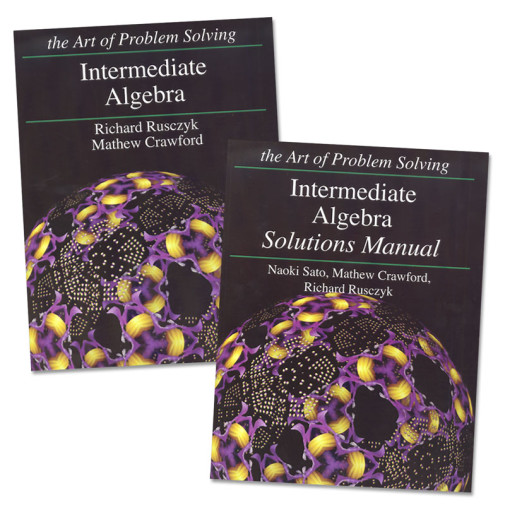We use cookies to make your experience better. To comply with the new e-Privacy directive, we need to ask for your consent to set the cookies. Learn more.
Art of Problem Solving Intermediate Algebra Set
A comprehensive textbook covering Algebra 2 and topics in Precalculus. This book is the follow-up to the acclaimed Introduction to Algebra textbook. In addition to offering standard Algebra 2 and Precalculus curriculum, the text includes advanced topics such as those problem solving strategies required for success on the AMC and AIME competitions.
A comprehensive textbook covering Algebra 2 and topics in Precalculus. This book is the follow-up to the acclaimed Introduction to Algebra textbook.
Topics covered in this book include a review of basic algebra topics, complex numbers, quadratics and conic sections, polynomials, multivariable expressions, sequences and series, identities, inequalities, exponents and logarithms, piecewise-defined functions, functional equations, and much more.
As with all of the books in Art of Problem Solving's Introduction and Intermediate series, the text is structured to inspire the reader to explore and develop new ideas. Each section starts with problems, so the student has a chance to solve them without help before proceeding. The text then includes solutions to these problems, through which new techniques are taught. Important facts and powerful problem solving approaches are highlighted throughout the text. In addition to the instructional material, the book contains over 1600 problems. The solutions manual contains full solutions to all of the problems, not just answers.
Paperback. Text: 720 pages. Solutions: 336 pages.
Reviews topics covered in the Introductory Algebra book. Covers advanced topics found in Algebra 2 (and advanced ones outside the scope of a standard Algebra 2 course) plus standard non-trigonometric Precalculus topics.
| Product Format: | Other |
|---|---|
| Brand: | Art of Problem Solving |
| Grades: | 9-12 |
Be the first to review this item
- Start typing and we'll see if it was already asked and answered.
- If there aren't already some matches, submit a new question.
- You'll get fast answers from customers who really own the item(s) and from our product experts. (About half the time you'll get an answer in under 2 hours!)
- Which items will best meet your needs
- What customers who own an item think of it
- How to use, fix, or take care of an item
- Product information
- General advice related to the types of products we sell
- Our store policies
For questions about an order you have placed, please contact customer support directly.

















Want to prepare for 9th grade study
summer practice
My son just finished the introduction of Algebra and wants to continue with the upper level.
Recommendation from the Singapore Math website.